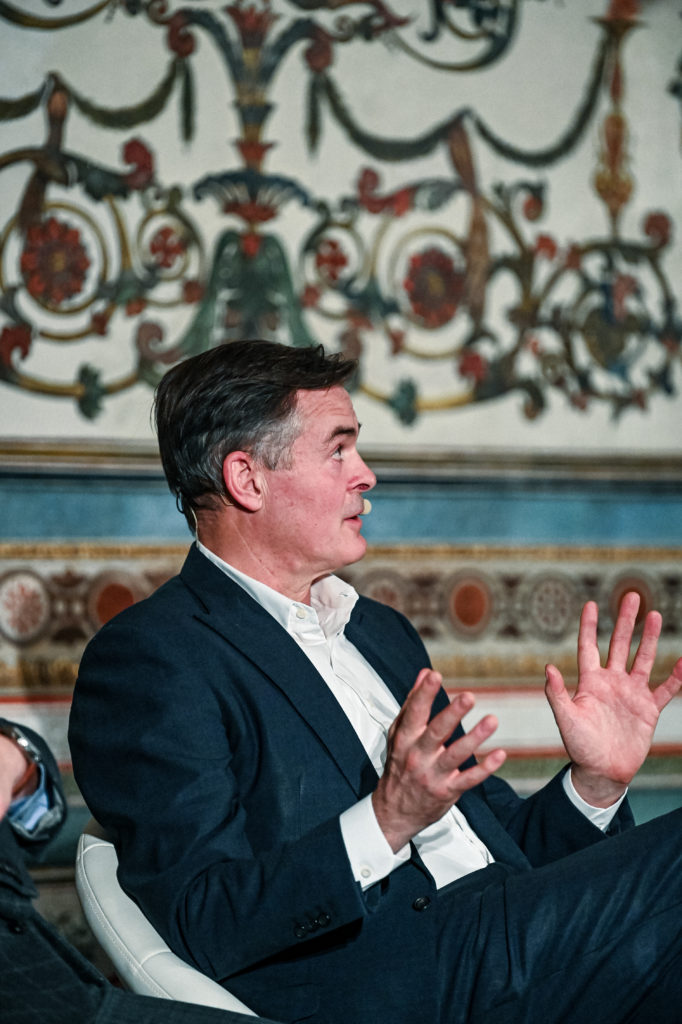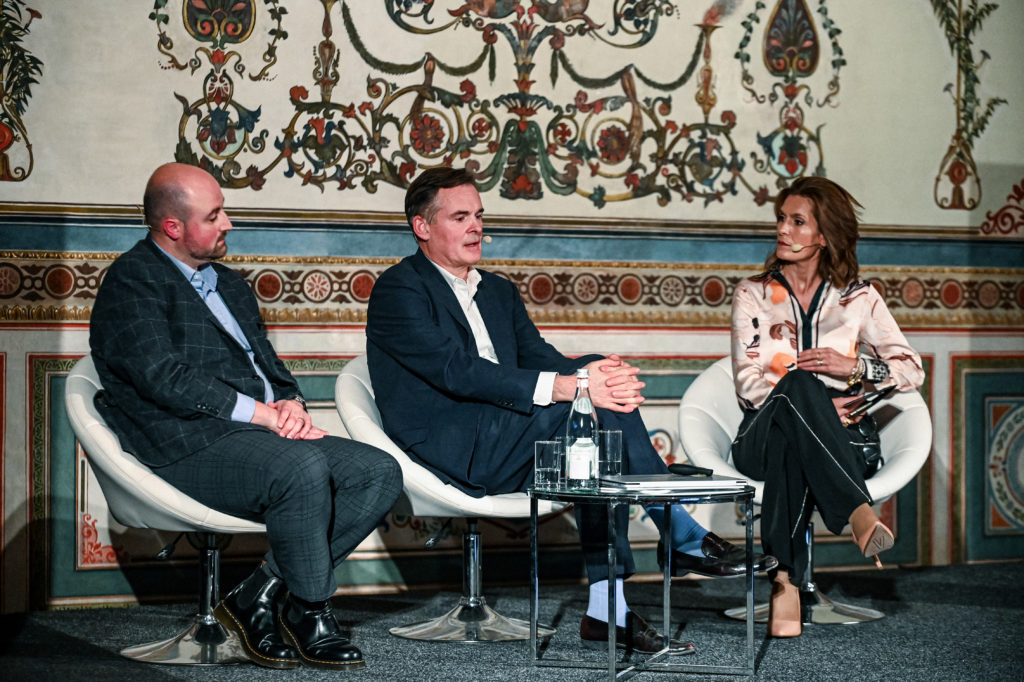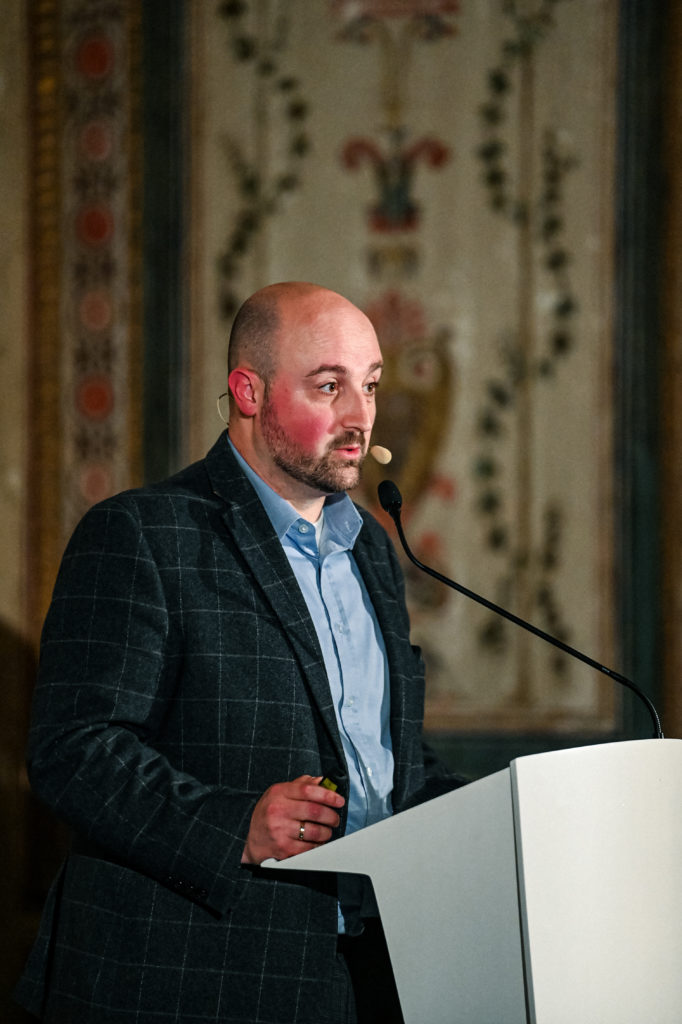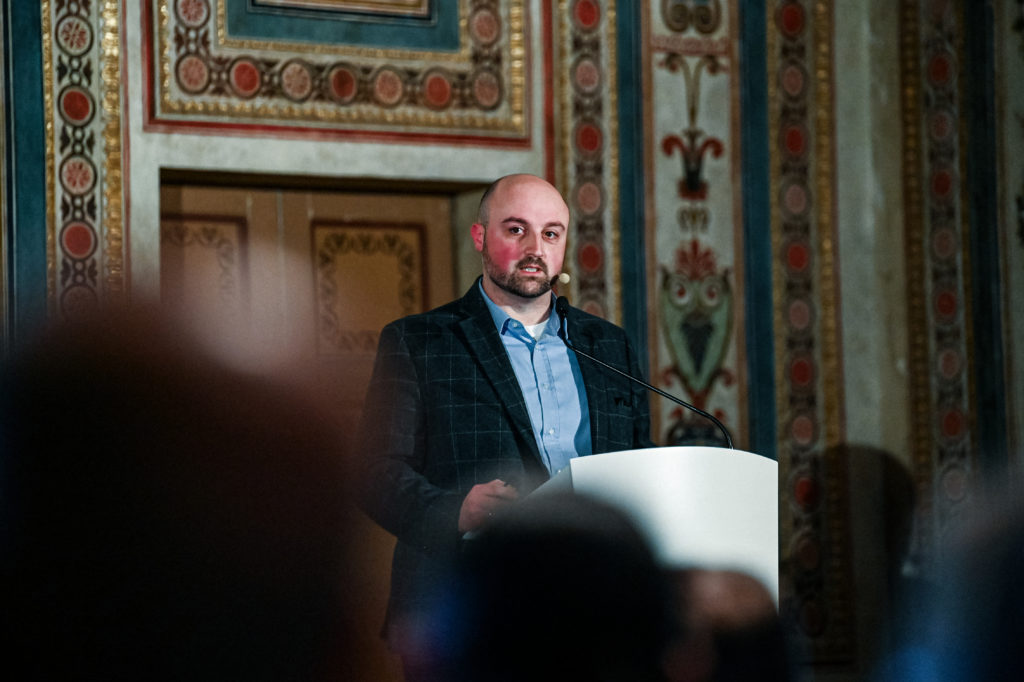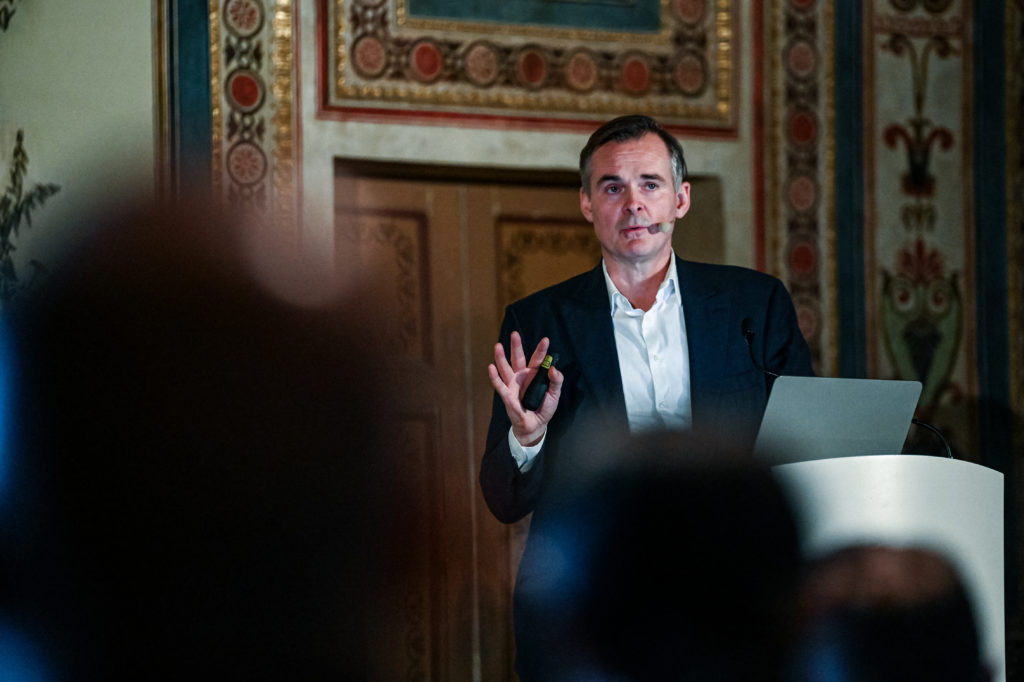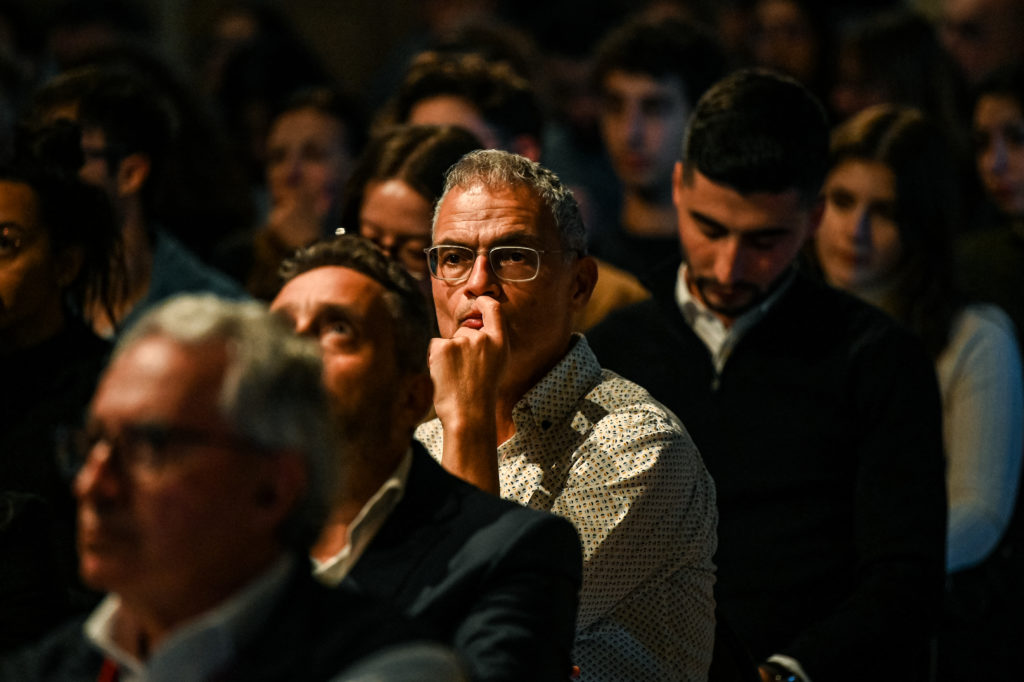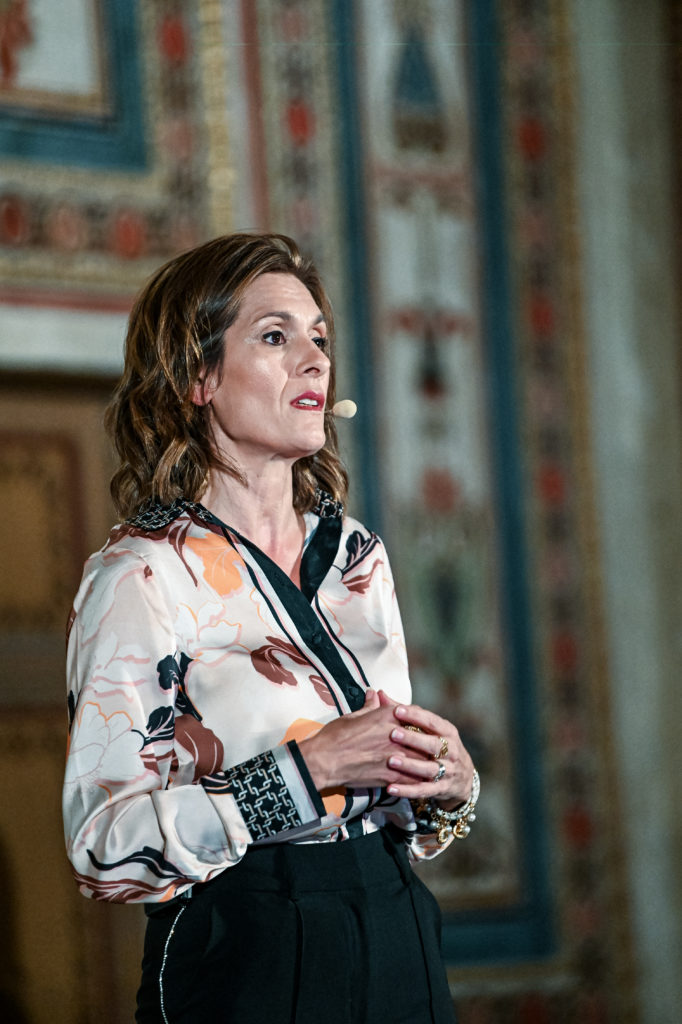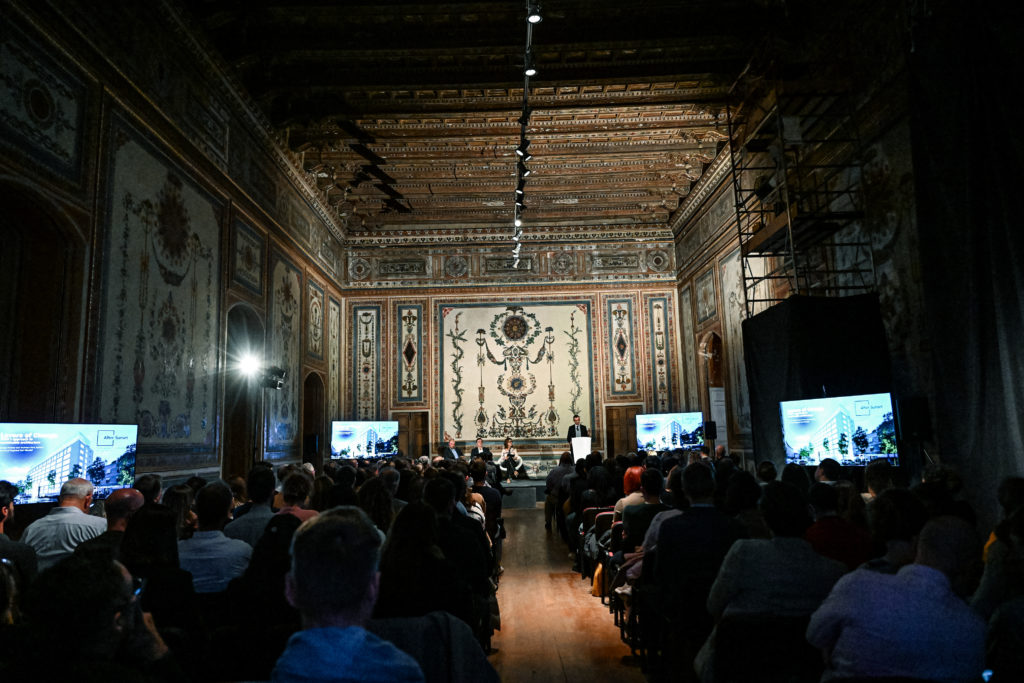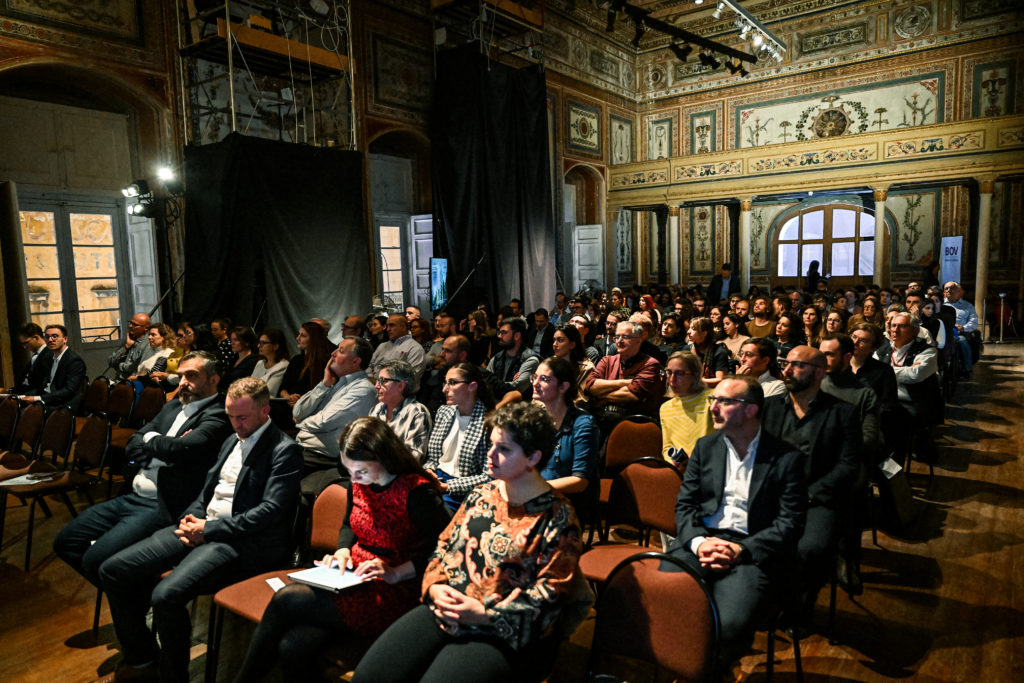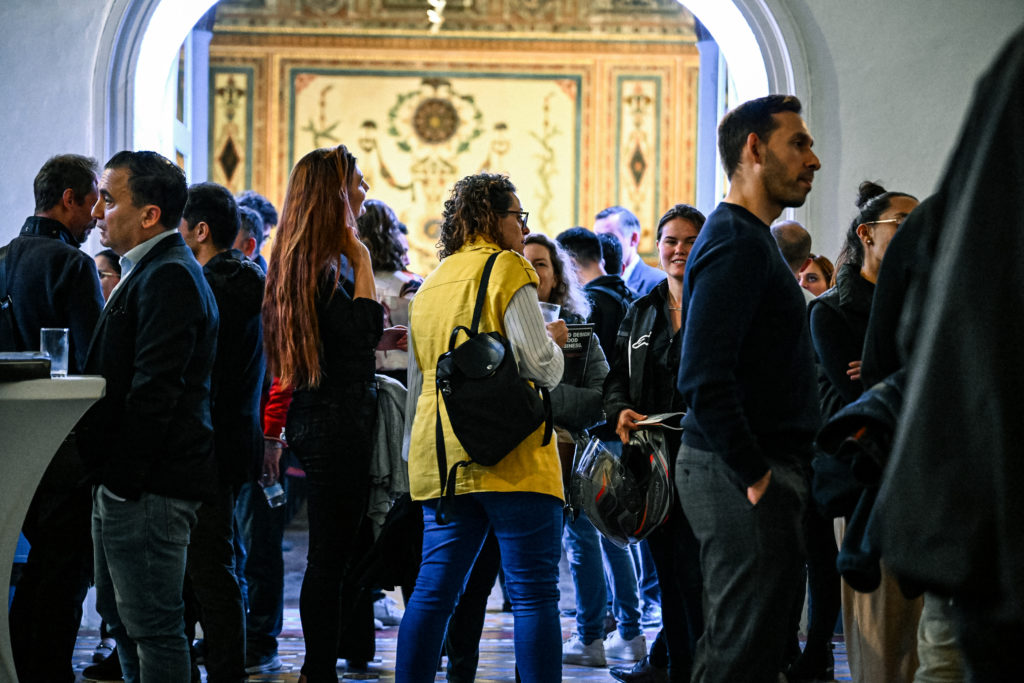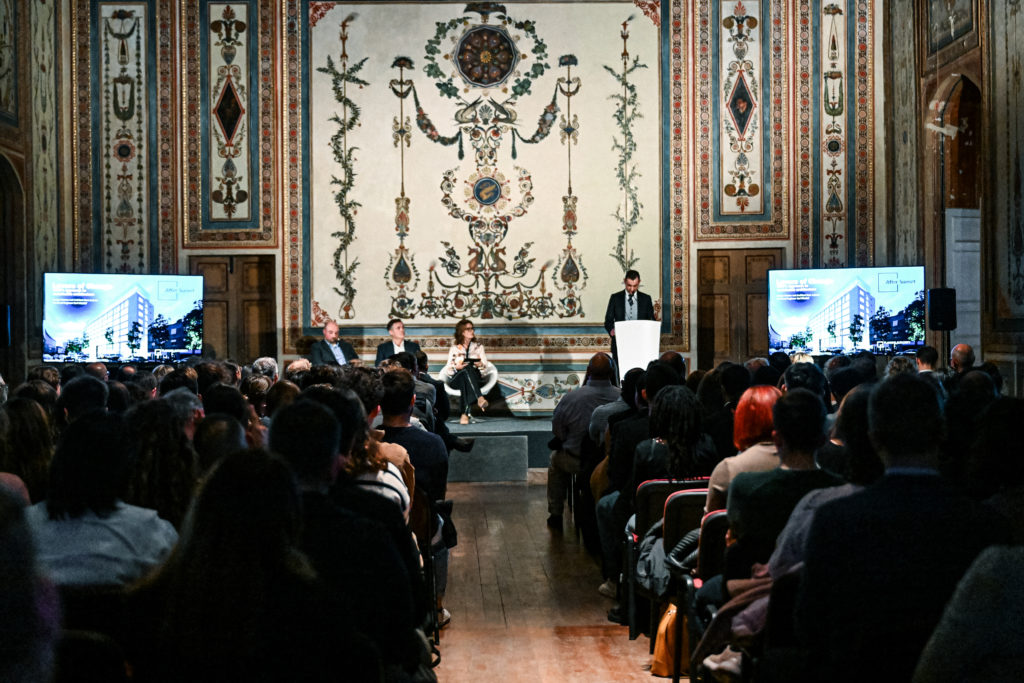
The Museum of Archaeology in Valletta served as the backdrop for an evening of intellectual enrichment, as architects, designers and architecture students gathered with anticipation for the latest ‘After Sunset’ event, organised by the Planning Authority in collaboration with the Kamra tal-Periti and SACES.
For this event, which is part of a series of Architecture and Design talks, international award-winning American firm Skidmore, Owings & Merrill (SOM) were invited to share their project experiences and pioneering approach to sustainable architecture.
In the spotlight were Design Partner and Architect Kent Jackson and Structural Engineer Karl Micallef, eminent figures from SOM, who imparted thought-provoking insights on adaptive reuse, and the metamorphosis of historical structures into sustainable buildings.
Preserving the past for a more balanced future
Oliver Magro, the Executive Chairman of the Planning Authority, took the podium to inaugurate the evening. During his speech, he highlighted the monumental task of preserving Malta and Gozo’s architectural gems, and asked: “Should we allow ‘ancient’ structures to decay, or is there merit in reviving them through adaptive reuse?” His speech explored the delicate balance of blending the old with the new, aligning architectural gems with the ever-evolving needs of communities, and the responsibility of custodians to safeguard identity, history, and culture.
Magro stressed that one should not perceive older buildings merely as relics, as retrofitting these kinds of buildings is environmentally friendly and opens new avenues for new businesses, as well as new ways to ensure a sustainable future.
The multifaceted nature of sustainability
Following Magro’s opening, Andre Pizzuto, the President of the Kamra tal-Periti, took to the stage. He said that, although the term ‘adaptive reuse’ is one of the main areas of debate at EU level, locally it has not yet reached the centrality of debates. He urged the audience to broaden their understanding, asserting that sustainability extends beyond carbon and climate change to encompass dimensions such as diversity, gender, and the intrinsic quality of beauty.
From modernism to sustainable innovation
Kent Jackson, the Design Partner and Architect at SOM embarked on a captivating journey through the firm’s history, tracing the evolution from the definition of modernism in 1952 to their contemporary commitment to solving global challenges.
As governments convene for COP 28 to address the pressing issues of our planet’s health, he emphasised the urgency for swift, scalable change.
Jackson posed a provocative question: Can our buildings mimic the carbon-absorbing function of forests? Acknowledging that cities occupy only three percent of the earth but contribute to seventy-five percent of emissions, he challenged the audience to view cities as ecosystems and individual buildings as trees.
To illustrate this concept, SOM has embarked on a mission to make high-rises not just carbon-neutral but carbon-negative, utilising alternative materials like bamboo and promoting a shift from additive to reductive design.
The focus is on making every building environmentally responsible and adaptable, leaving no room for excuses, he stated. Key initiatives include incorporating green outdoor spaces, promoting biodiversity, and embracing biophilia – the innate connection between humans and nature.
Additionally, SOM integrates solar panels for energy generation and employs energy-efficient glass facades to reduce operational energy.
Jackson’s vision extends to retrofitting existing buildings, proving that sustainability is achievable with existing technologies. By reimagining the structural system and reducing interior layers, SOM aims to set a new standard for eco-friendly architecture, extending the lifespan of structures while minimising their carbon footprint.
SOM’s commitment to sustainability goes beyond rhetoric; the firm has made itself a carbon-neutral business, with projects scattered across the globe and no centralised headquarters.
Adaptive reuse
SOM Structural Engineer Karl Micallef presented tangible examples of adaptive reuse and sustainable design. From the iconic Lever House in New York to the transformation of the decaying Cook County Hospital in Chicago into a high-end hotel, he unveiled the potential inherent in repurposing existing structures. Moving from grand structures to smaller ones, the Optimo Hat Factory in Chicago emerged from the adaptive reuse of a fire station. This not only breathed new life into the building but also generated income, exemplifying the economic sustainability of projects such as these.
Micallef’s own journey with SOM began with the United Nations campus in Geneva, his inaugural project. Revamping a historic fabric without compromising its essence, the team created a sustainable and efficient building, integrating timber and precast concrete for a harmonious connection with the landscape.
The concept of adaptive reuse is not a novel one, Micallef pointed out, citing historical examples such as the metamorphosis of Valletta from a fortress to an open-air museum. However, the focus shifts to ordinary buildings, prompting the question of how to approach smaller projects sustainably.
In a world where change is constant, Micallef envisions sustainable architecture as a gift to future generations. His philosophy revolves around making buildings future-proof and adaptable, ensuring that they evolve with the needs of society while preserving their intrinsic value.
Works of beauty
The event also saw an engaging Q&A session, exploring the coexistence of innovation, cultural heritage, and sustainability, followed by a short presentation on the Archivisit project by SACES Secretary General Julian Vella and treasurer Karl Sammut.
The evening not only showcased SOM’s expertise but also highlighted the collaborative efforts between academia and policy makers, as eloquently underscored by Dr Wendy Jo Mifsud, consulting editor for this year’s MASP Awards publication. She said that the awards truly show that architects in this country are capable of producing works of great beauty.
At the end of the evening, Dr Mifsud presented a copy of the MASP Awards publication to Mr Magro.

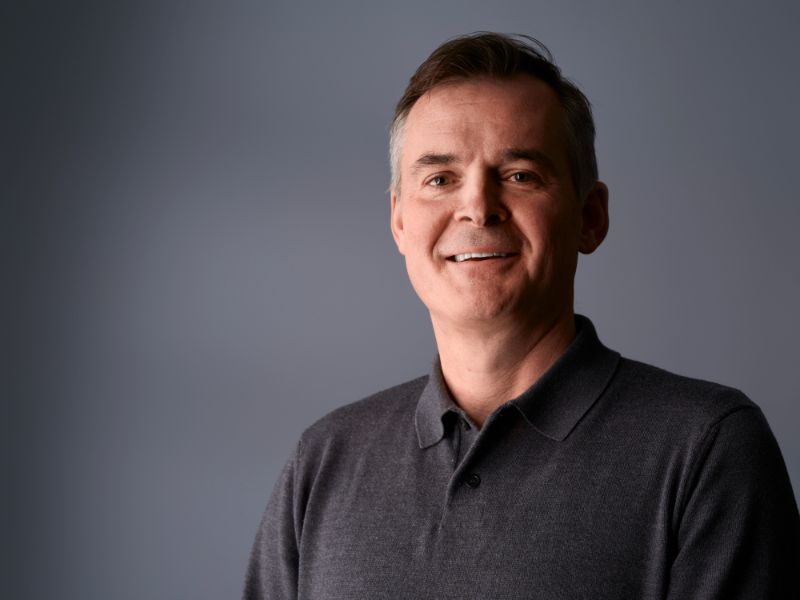
Architect Kent Jackson, SOM Design Partner
As a Design Partner at SOM in London, Kent leads the designs of a wide range of scales and typologies across the globe. Most significantly, these include the renovation of the United Nations’ Palais de Nations complex in Geneva and the nearly complete Karlatornet, Scandinavia’s tallest
building. Passionate about improving the future of planetary health, Kent is also a leader of SOM’s Climate Action Group, advancing the firm’s commitment for all active work to be net zero whole-life carbon by 2040.
As Global Ambassador for the World Green Building Council, he works to amplify the call to action for governments and policymakers to accelerate the transition to net-zero carbon buildings. Kent has also spoken widely at conferences and architectural schools around the world. In 2021, he
was invited by the United Nations to speak at the 26th UN Climate Change Conference. Last year, Kent spoke at TEDxGoodenoughCollege about Urban Sequoia: a revolutionary new concept to build regenerative cities.
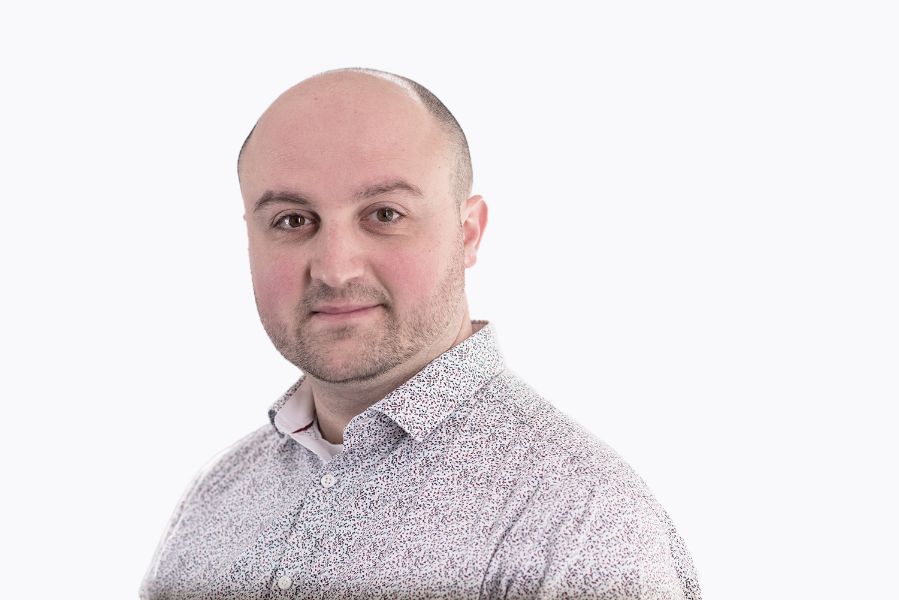
Structural Engineer and Perit Karl Micallef, SOM Associate Principal
Karl joined SOM’s London studio in 2015 and has since worked on several significant projects as part of the Structural Engineering team. These include the recently completed Nine Elms Square in London, Scandinavia’s tallest building – Karlatornet – in Gothenburg, and Octagon Tower, due to
be the tallest building in Birmingham, the UK’s second-largest city.
Before joining SOM, Karl worked at Foster + Partners for two years. He graduated with a Bachelor of Engineering and Architecture degree from the University of Malta in 2006 after which he worked with DeMicoli + Associates on various projects in Malta and Libya.
Karl later obtained an MSc in earthquake engineering at Imperial College London and after working in the field for a year, pursued his PhD also at Imperial College. His research investigated the response of plated structures to blast loading and how high-performance steels and novel polymeric composite materials can be used to mitigate damage.
Karl is a chartered engineer and remains active in academia by helping to monitor student design projects at Imperial College and delivering taught and design modules at the University of East London as a Visiting Professor from the Royal Academy of Engineering.

Skidmore, Owings & Merrill (SOM) is a global practice of architects, designers, engineers, and urban planners, responsible for some of the world’s most technically and environmentally advanced buildings and significant public spaces. From a strategic regional plan to a single piece of furniture, SOM’s designs anticipate change in the way we live, work and communicate, and have brought lasting value to communities around the world. The firm’s approach is highly collaborative, and its interdisciplinary team is engaged in a wide range of international projects, with creative studios based across the globe. SOM is a net zero emissions business. www.som.com
